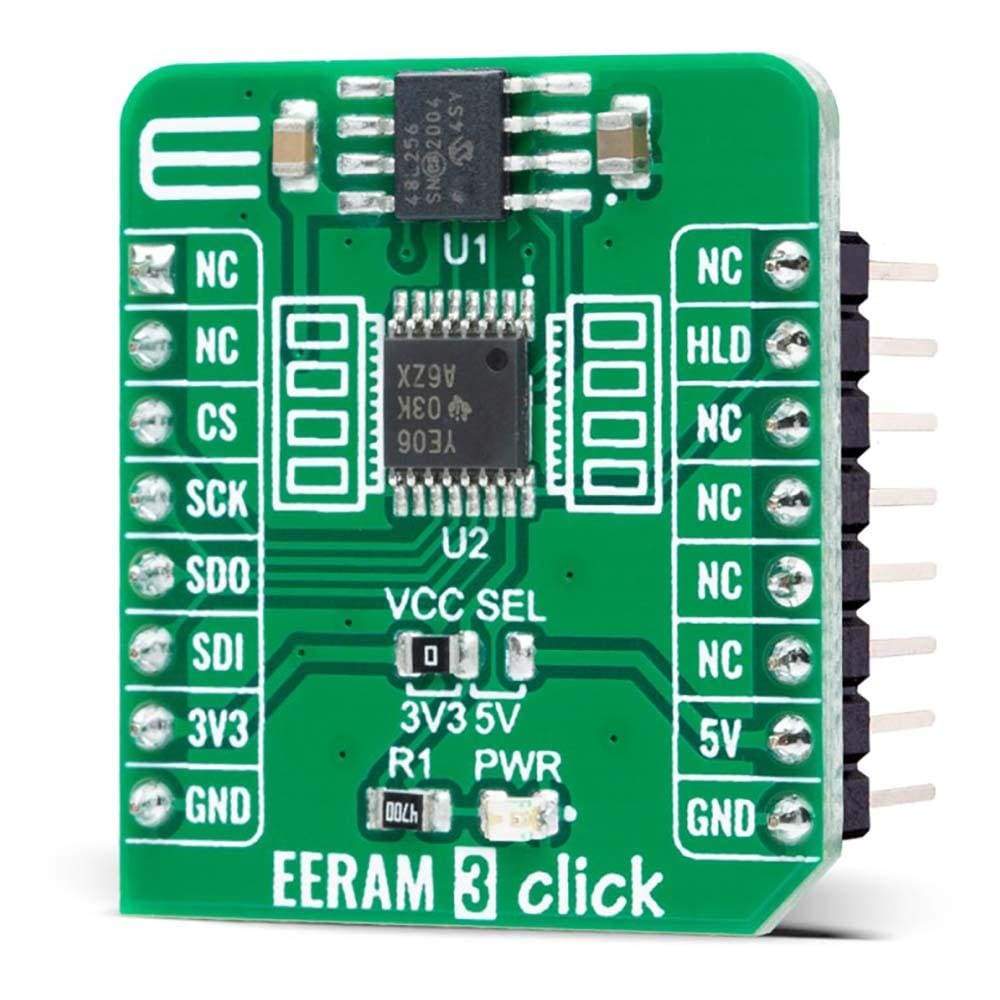
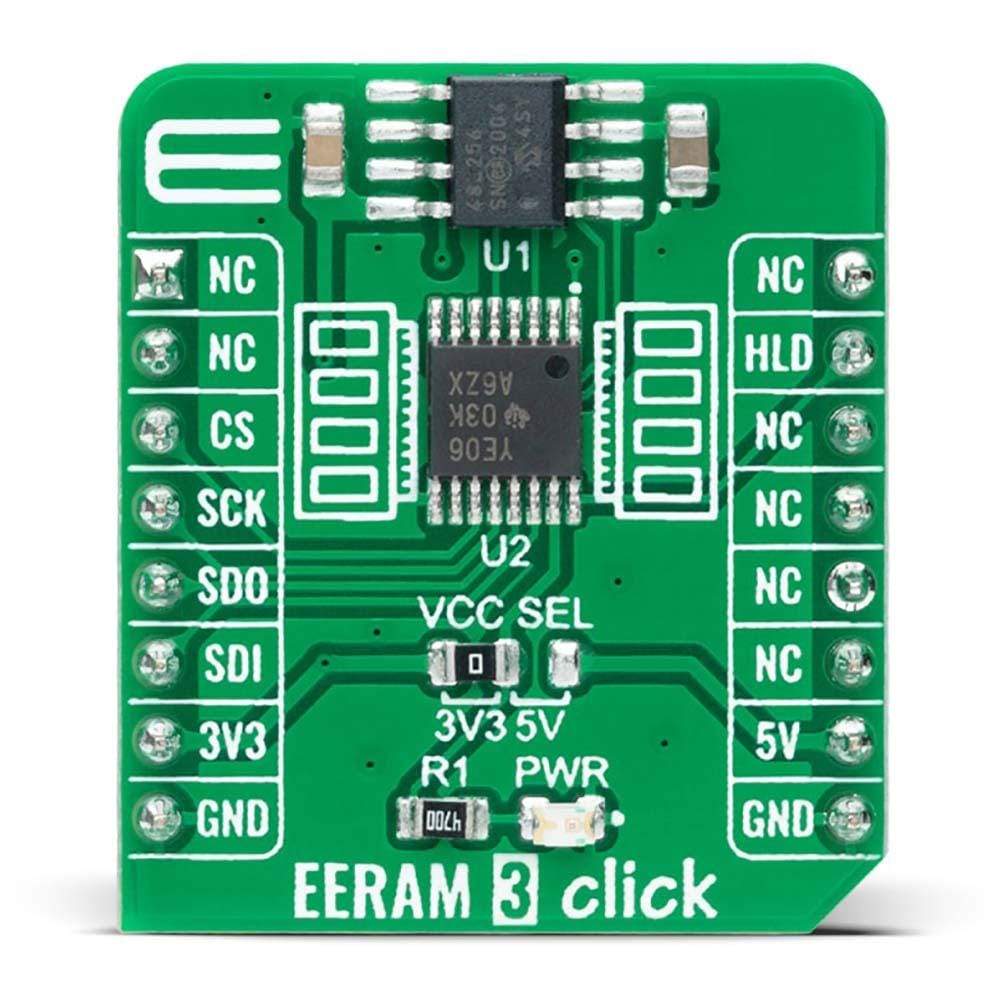
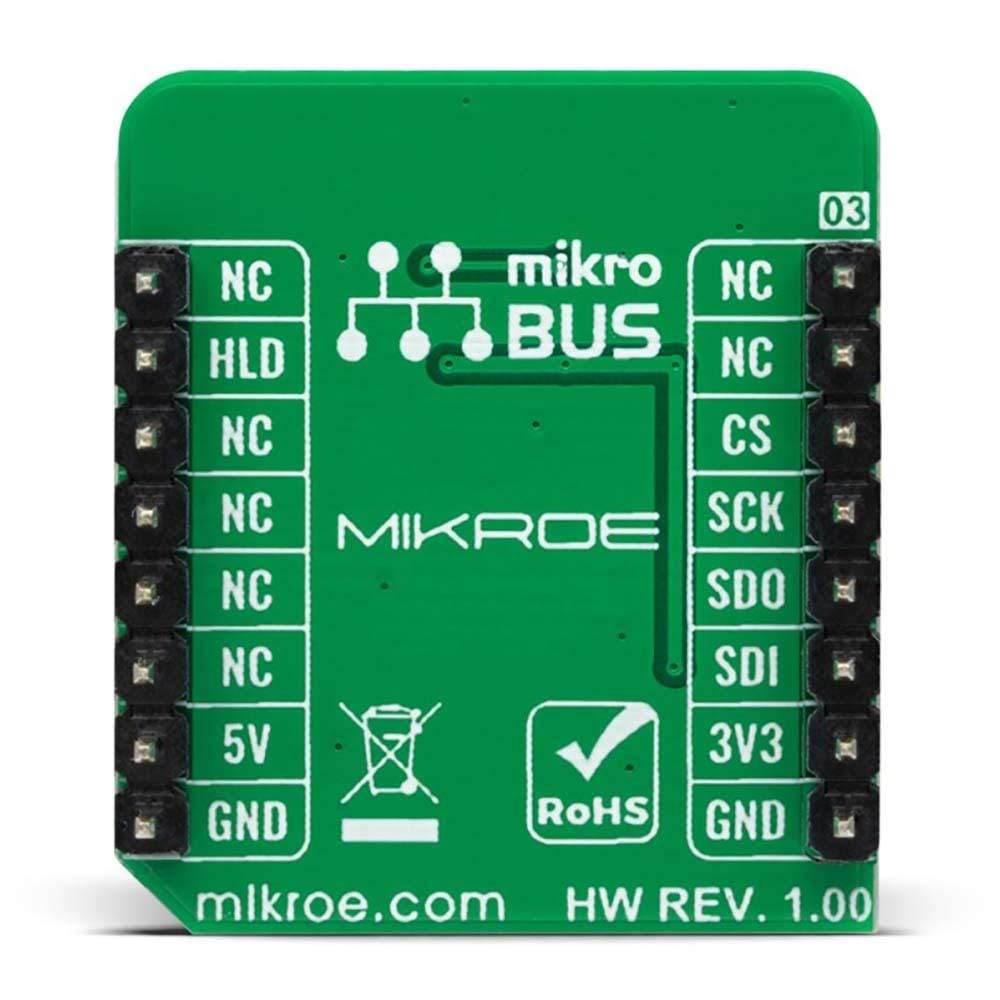
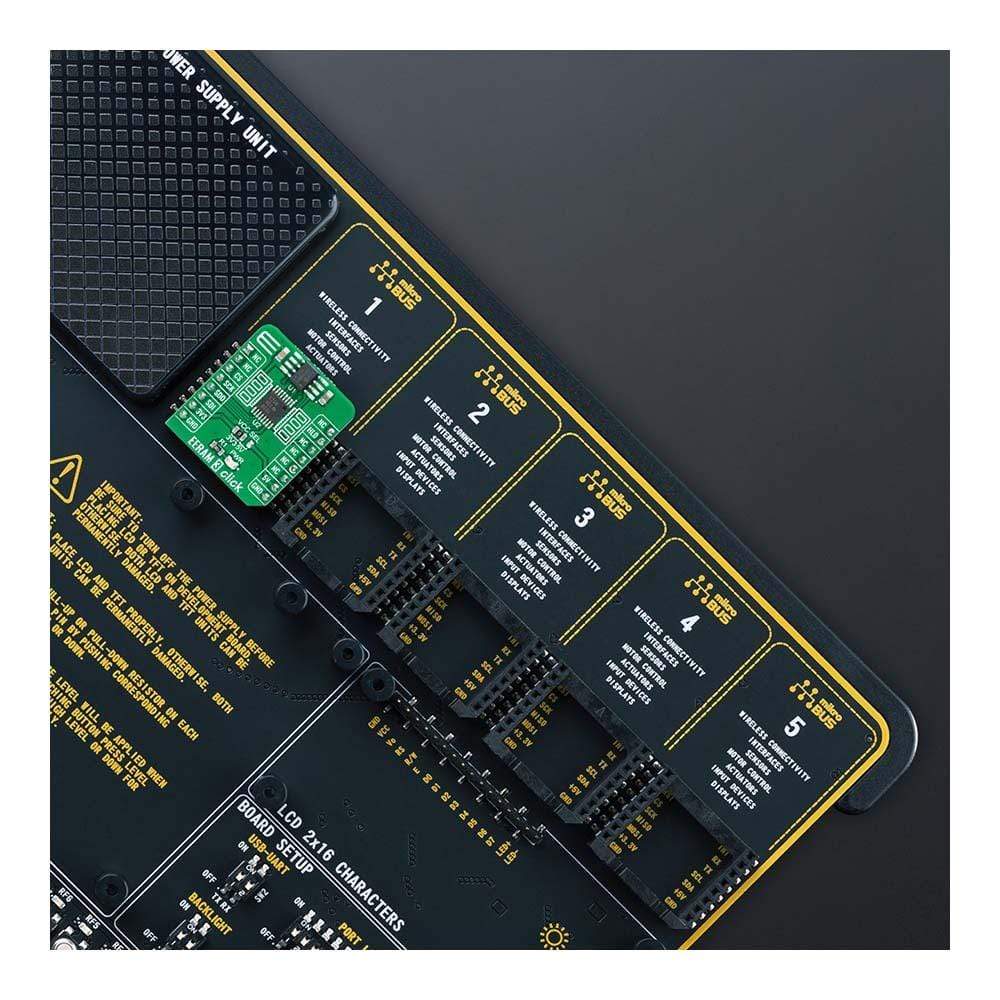
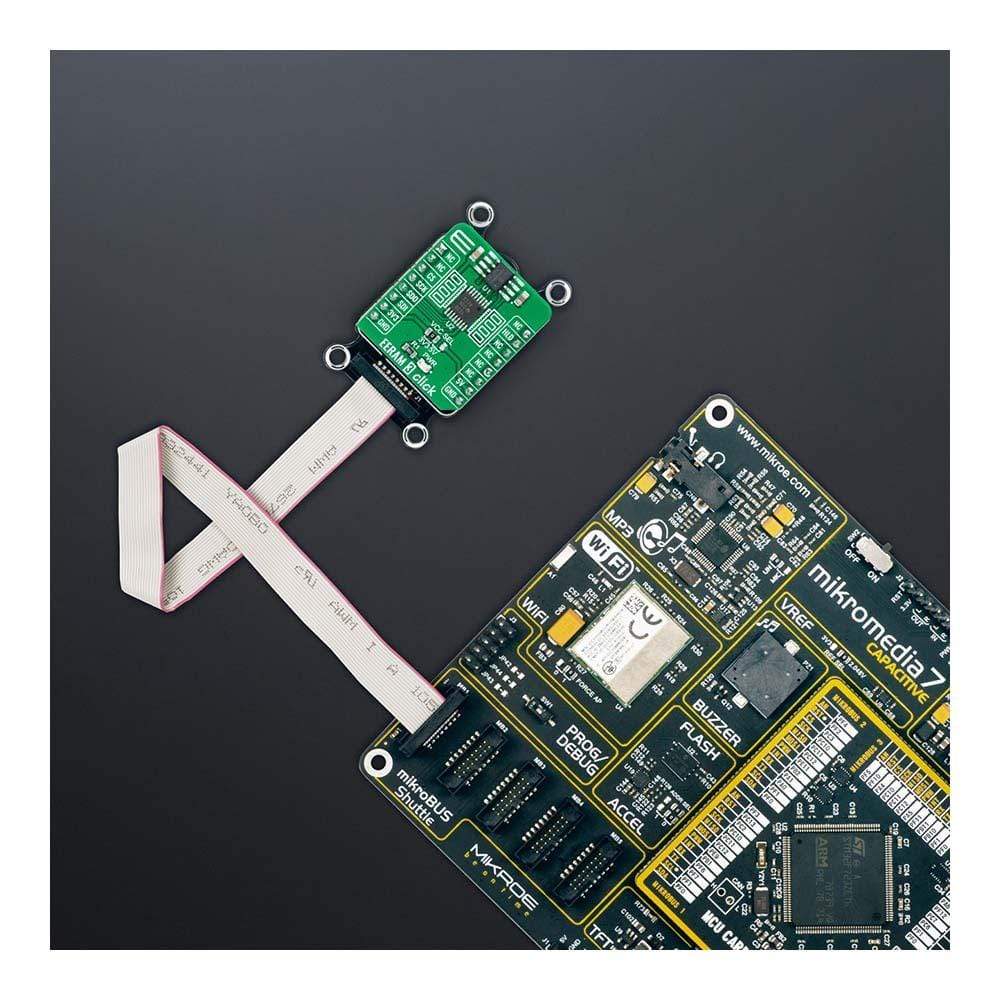
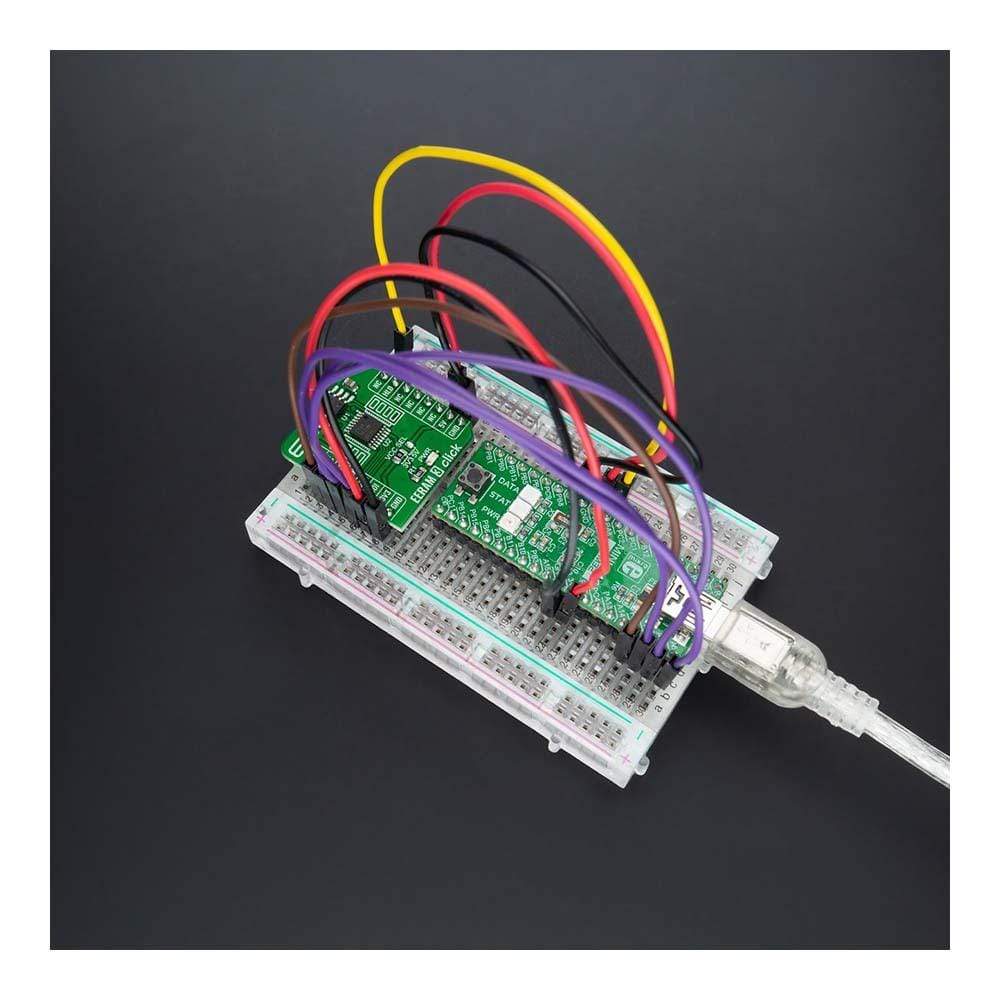
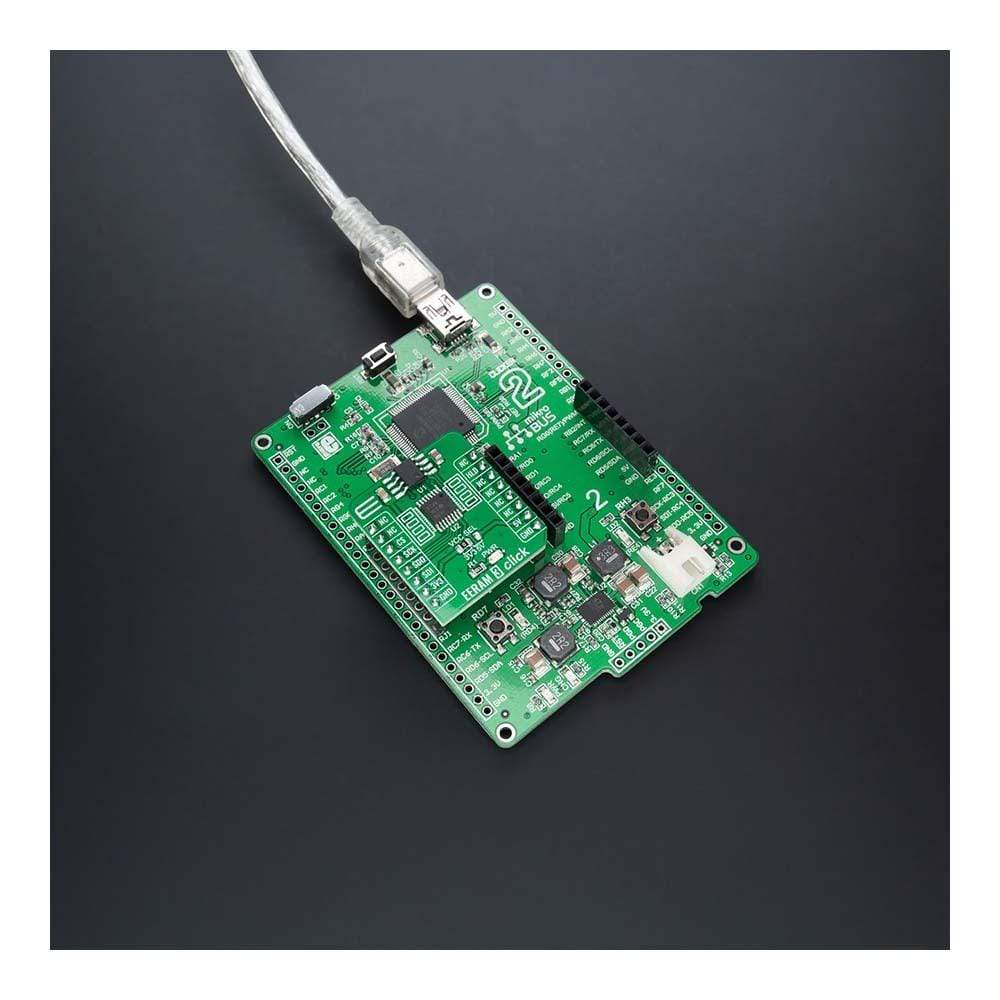
Overview
The EERAM 3 Click Board™ is a compact add-on board that contains EERAM memory designed to retain data during power loss without the aid of external batteries. This board features the 48L256, a serial EERAM with SRAM memory core, including hidden EEPROM backup from Microchip Technology. The 48L256 is structured as a 256-Kbit SRAM with EEPROM backup in each memory cell, where SRAM is organized as 32,768x8 bits and uses the SPI serial interface. It offers unlimited reads and writes, invisible-to-user data transfers on power loss, 100,000 backups (data can be transferred 100,000 times), and data retention (data is kept safe for ten years minimum).
The EERAM 3 Click Board™ is ideal for nonvolatile memory applications requiring frequent or rapid writes and unlimited endurance.
Downloads
Der EERAM 3 Click Board™ ist eine kompakte Zusatzplatine mit EERAM-Speicher, der Daten bei Stromausfall ohne externe Batterien speichert. Diese Platine enthält den 48L256, einen seriellen EERAM mit SRAM-Speicherkern, einschließlich verstecktem EEPROM-Backup von Microchip Technology. Der 48L256 ist als 256-Kbit-SRAM mit EEPROM-Backup in jeder Speicherzelle strukturiert, wobei SRAM als 32.768 x 8 Bit organisiert ist und die serielle SPI-Schnittstelle verwendet. Er bietet unbegrenztes Lesen und Schreiben, für den Benutzer unsichtbare Datenübertragungen bei Stromausfall, 100.000 Backups (Daten können 100.000 Mal übertragen werden) und Datenaufbewahrung (Daten werden mindestens zehn Jahre lang sicher aufbewahrt).
Das EERAM 3 Click Board™ ist ideal für nichtflüchtige Speicheranwendungen, die häufiges oder schnelles Schreiben und unbegrenzte Lebensdauer erfordern.
| General Information | |
|---|---|
Part Number (SKU) |
MIKROE-4854
|
Manufacturer |
|
| Physical and Mechanical | |
Weight |
0.02 kg
|
| Other | |
Country of Origin |
|
HS Code Customs Tariff code
|
|
EAN |
8606027384004
|
Warranty |
|
Frequently Asked Questions
Have a Question?
Be the first to ask a question about this.







